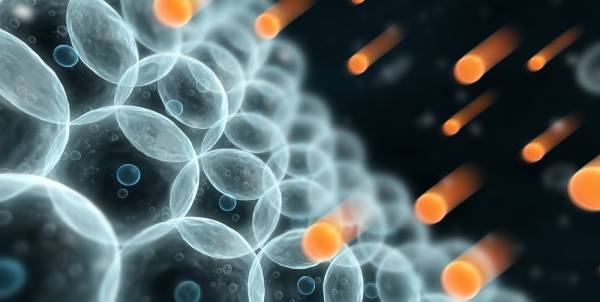Being a regular at a local CrossFit gym allows me to interact with all kinds of people. Love CrossFit or hate it, one nice thing about the culture is the interactive nature. Of course, other than talking gains, we also talk food.
I have been a scientist for a few years, and I enjoy doing the dirty, dry research behind all of the nutrition questions asked in the confines of a room full of fitness enthusiasts. And if anyone asks me for a tip to help control calories, manage appetite, or eating for all-around health, my first go-to is intermittent fasting (IF). Yes, even before the paleo diet.
RELATED: Intermittent Fasting For Athletes: The Why and How
Intermittent Fasting and Starvation Mode
I think all types of intermittent fasting have their values, but in my experience, a daily fast with an eating window is the most convenient. I prefer to skip breakfast and maintain an eight-hour eating window from 12:00 to 8:00PM.
Critics of intermittent fasting reference phrases like “starvation mode” if skipping breakfast is involved. By definition this means the metabolism slows to rates that do not effectively break down fat. Starvation mode is not a scientifically proven idea, but it is possible. It is also possible you can make starvation mode work to your advantage without calorie restriction.
Imagine a hypothetical daily schedule where food timing is used to manage appetite. In the morning, try skipping breakfast. Even hold off on the morning coffee as long as possible. Many people, me included, will not feel particularly hungry, and if we do, it passes quickly. We use “starvation mode” to our advantage and don’t feel hungry until lunch.
“Starvation mode is not a scientifically proven idea, but it is possible. It is also possible you can make starvation mode work to your advantage without calorie restriction.”
The lack of hunger most likely stems from the balance of the hunger hormones leptin and ghrelin, according to Dr. Michael Mosely who authored a documentary special on the topic. The fasting state also allows for a period of fat burning instead of carbohydrate burning. As your cells become more accustomed to metabolizing fat instead of sugar, the body becomes more sensitive to insulin and blood sugar. The sensitivity to insulin is a hallmark of cardiovascular health.
RELATED: First Rule: Do Not Talk About Intermittent Fasting
IF Increases Speed of Recovery
Dr. Mosley’s documentary, as well as recent research in the scientific journal Experiment Gerontology, supports the presumption that intermittent fasting may aid in inflammation resistance in muscle fibers. We all know exercise breaks down muscle tissue. The process of rebuilding muscles makes them stronger and, in many cases, bigger. Recovery can be a painful albeit useful process, but research shows that inflammatory factors are reduced when exercising in a fasted state. Recovery is not only less painful but more rapid.

In the study, the researchers monitored young adult women to be sure they had fasted for at least eight hours for five days while the control group was fed a specific diet for the same five days. Both groups were supervised while they completed sets of bicep curls with their non-dominant arm. Those in the control group lost their elbow extension at a significantly higher rate compared to the group that had been fasting. Exercise-induced muscle damage caused more stiffening of the fed working muscle fibers than the fasted working muscle fibers.
RELATED: Fasting Does Not Negatively Affect Muscle Gain
IF Prevents Cells From Overproducing Free Radicals
The fasted state is not only beneficial for the body on the muscular level, but the cellular level as well. Health experts would will us to drink four or five cups of green tea per day for the antioxidant effects to neutralize damaging free radicals. Intermittent fasting prevents the cells from overproducing the damaging free radicals that antioxidants combat.
Think of cellular mitochondria as very efficient engines. Even the most efficient engines give off a few fumes. Think of these fumes as free radicals. A normal three-meal, two-snack-per-day eating schedule is like a car in a small room running all day, accumulating harmful fumes and damaging anything stuck in the room.
“Intermittent fasting prevents the cells from overproducing the damaging free radicals that antioxidants combat.”
This is a cellular mitochondria chipping away at our snacks all day long. The harmful oxidants build up inside the cell and can damage proteins and DNA. If the engine runs for a shorter period of time, there is not as much accumulation of harmful fumes, especially with the extra time for the fumes to dissipate. It is the same with harmful oxidants and free radicals. Research shows periods of fasting have reduced overall cellular free radicals and inflammatory markers, which are indicators of heart disease and diabetes risk.

Free radicals.
Summary: The Benefits of Intermittent Fasting
- Intermittent fasting is a good tool for calorie control/calorie restriction depending on your goals.
- Maintaining a daily eating window can take the inconvenience out of calorie restriction.
- Starvation mode can help you sustain consistency with an eating window while fasting the rest of the day.
- Starvation mode positively affects insulin sensitivity, as well as the hunger hormones, leptin and ghrelin.
- While, in theory, metabolism slows during starvation mode, fat is preferentially burned.
- During exercise, fasted muscles have been shown to stiffen more slowly.
- At the cellular level, fasted cells accumulate fewer oxidants and free radicals, which slows the degradation of proteins and DNA. Mitochondria have time to rest and allow free radicals to dissipate.
RELATED: How Leptin Helps Us Avoid Getting Fat
Experiment with IF Styles and Schedules
Trying intermittent fasting for yourself is an interesting experiment. It depends greatly on your individual work and exercise schedule, but luckily, it can be adjusted for those factors. The style of fast also depends upon your goals. A one-day-per-week fast may fit your schedule better than a daily fast.
“While, in theory, metabolism slows during starvation mode, fat is preferentially burned.”
Experiment. It is easy to try, and doesn’t cost you any more money than a typical healthy diet would. Of course, the quality of your food and physical activity will contribute to the results you see, but structured, timed eating plans have only been shown to increase health when used responsibly.
This is a plan more suited to healthy individuals, and those with questions should contact their physician. For those with a history of disordered eating, intermittent fasting could trigger a relapse and is not recommended.
References:
1. Mosley, M. “Eat, Fast & Live Longer.” BBC America. (2012).
2. Dannecker, E. A., et al., “The Effect of Fasting on Indicators of Muscle Damage.” Exp Gerontol 48, no. 10 (2013): 1101-6.
3. Antoni, R. et al., “The Effects of Intermittent Energy Restriction on Indices of Cardiometabolic Health”. Research in Endocrineology Vol 2014 (2014), 24 pages.
Photos courtesy of Shutterstock.






